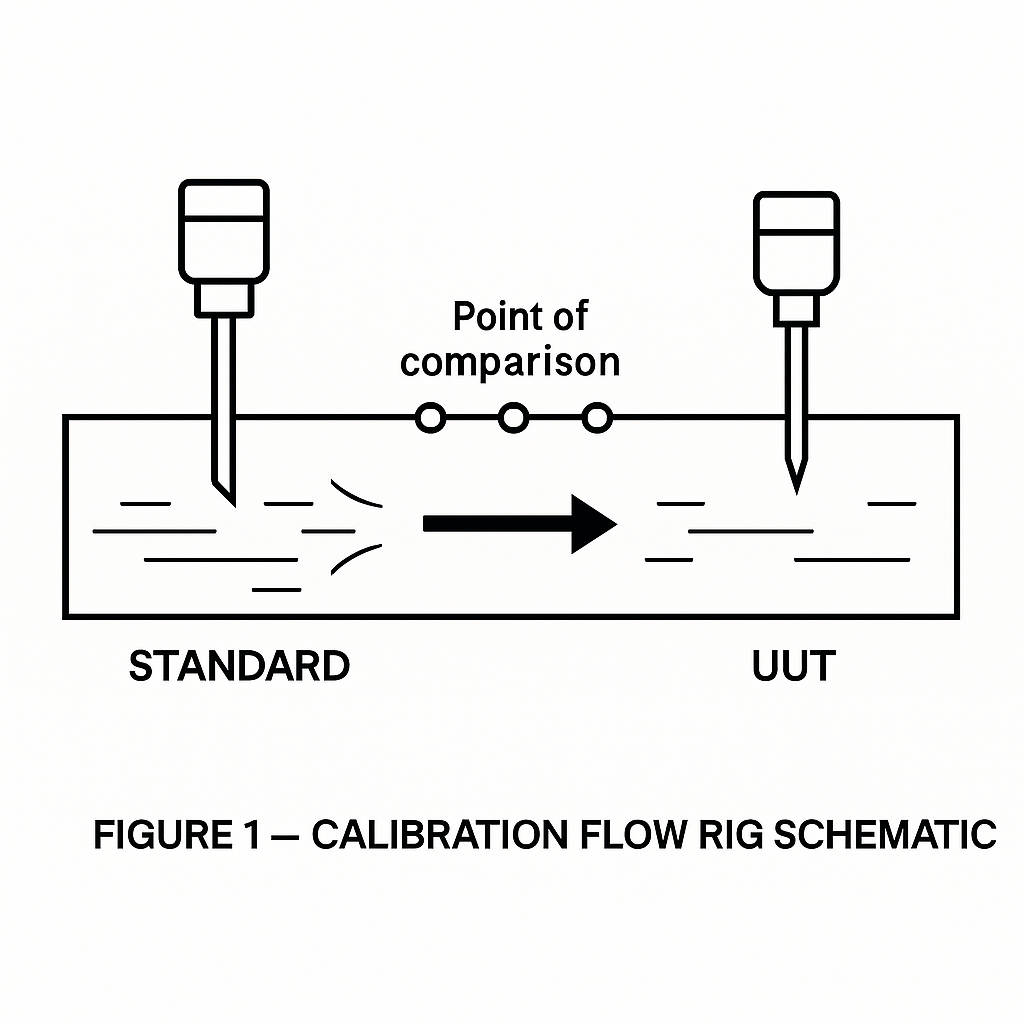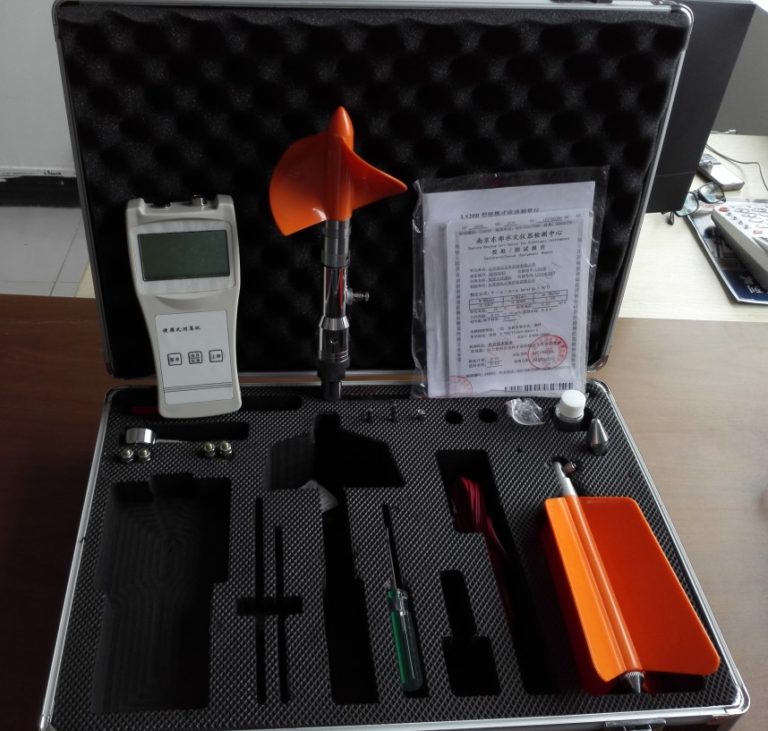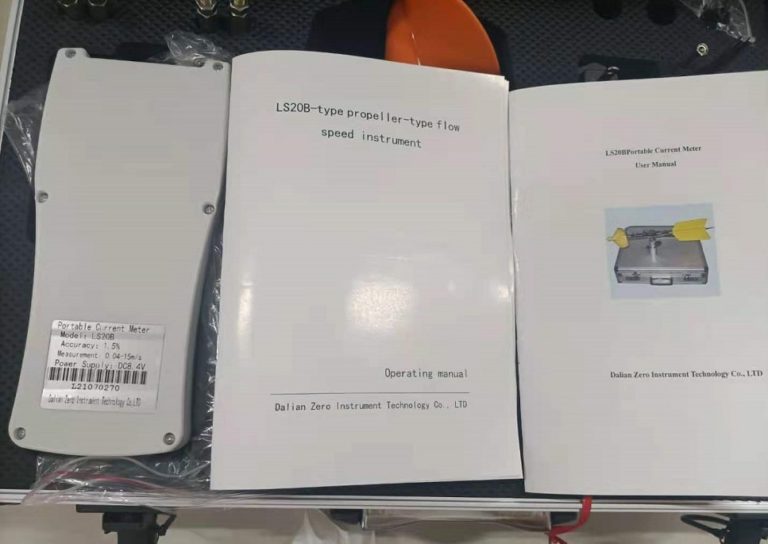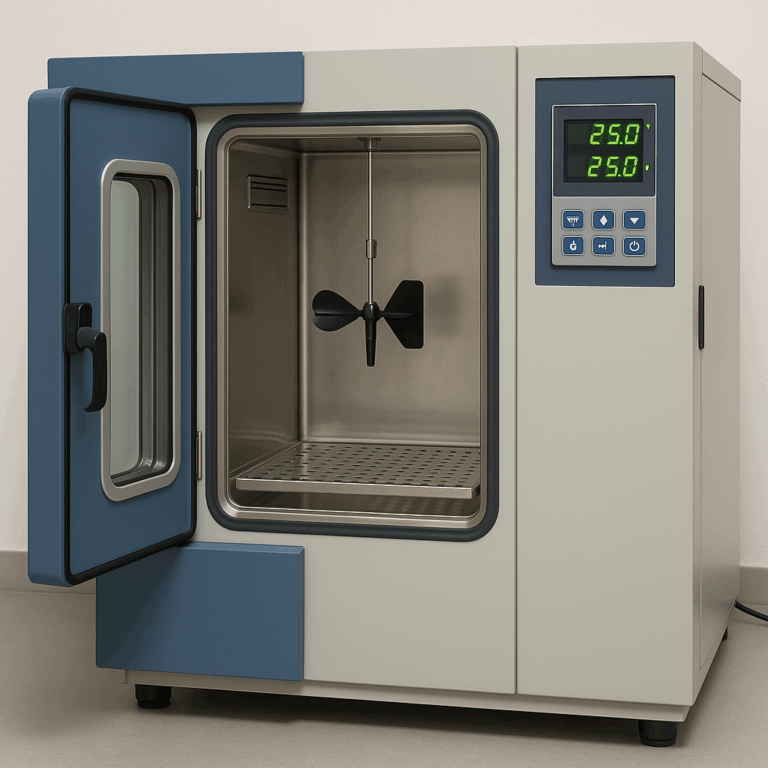Scope: open-channel/current meters, insertion velocity probes, electromagnetic/ultrasonic velocity sensors used in water resources, environmental monitoring, and industrial processes.

1) Why calibration is essential
Eliminates drift: Sensors age; electronics drift; mechanical parts wear; ambient conditions change. Calibration removes systematic error so readings remain traceable to national/industry standards.
Protects decisions: Discharge calculations, compliance reports, and control loops all rely on velocity accuracy; bad data = wrong flow, wrong dosing, wrong alarms.
Meets audits & contracts: Many QA programs (ISO/IEC 17025–based systems, project specs) require documented, periodic calibration and as-found/as-left data.
Reduces lifecycle cost: Early detection of bias prevents mis-operation, re-sampling, and penalties.
Target performance indicators: zero offset, span error, linearity, repeatability, response time, and environmental stability (temperature/humidity).

2) Typical calibration & verification methods
Laboratory calibration on a standard rig
Compare the unit under test (UUT) against a traceable standard in a controlled flow facility for multiple points across the range. Highest accuracy; requires dedicated equipment.On-site side-by-side comparison
Run a certified portable reference velocity meter simultaneously with the UUT in the same profile/section. Ideal for large/installed systems that can’t be removed.Sensor characterization tests
Check sensitivity, linearity, repeatability, and zero in fixtures; confirm response time under step changes.Electronics/IO verification
Stimulate the signal chain; verify acquisition, processing, display, and outputs (4–20 mA, pulse, RS-485) for accuracy and stability.
Recommended calibration point set (example)
Zero → 10% → 25% → 50% → 75% → 90% → 100% of full scale (both upscale and downscale to capture hysteresis).
3) What to include in a complete calibration
Zero (offset) calibration
Span (range) calibration
Linearity test (full-range multi-point)
Repeatability test (≥3 repeats at 3–5 points)
Response time test (10–90% or T63)
Environmental checks (temperature/humidity influence if applicable)

4) Calibration interval (how often?)
General rule: every 6–12 months, adjusted by use frequency, criticality, and environment.
Recalibrate immediately if:
The instrument was repaired or adjusted;
Abnormal readings appear or QA flags a data shift;
The unit experienced shock/rough handling or harsh conditions.
5) Field checklist (quick pass/fail before sending to a lab)
Site condition stable (depth/profile not changing rapidly).
Sensor clean; no fouling/bubbles on transducers; cables intact.
Reference meter within its own calibration validity.
IO sanity check: 4–20 mA loop, pulse scaling, and RS-485 address/baud verified.
Record water temperature (affects some ultrasonic/electromagnetic measurements).
Log as-found data at all points before adjustments; then log as-left.
6) Documentation to keep (audit-ready)
Instrument ID, model/SN, firmware, location, medium.
Calibration date, due date, environmental conditions.
Method & standards used (traceability statement).
Tabulated as-found vs. as-left results (zero/span/linearity/repeatability/response).
Measurement uncertainty and pass/fail against acceptance limits.
Technician, lab accreditation (if applicable), and signatures.
Maintenance notes (cleaning, sealing, repairs).

Simple acceptance limits (example – edit to your spec)
| Item | Limit |
|---|---|
| Zero offset | ≤ ±0.5% of full scale |
| Span error | ≤ ±0.5% of reading |
| Linearity (BFSL) | ≤ ±0.5% of full scale |
| Repeatability | ≤ 0.2% of reading |
| Response time T63 | Within datasheet spec |
7) Common pitfalls (and how to avoid them)
Ignoring installation effects: swirl, uneven profiles, or entrained air bias readings—verify the measurement section or use profile compensation.
No as-found data: you lose evidence of drift and can’t assess process impact.
Reference uncertainty overlooked: your “standard” might be out of tolerance.
Environmental mismatch: lab calibration at 23 °C copied to a site at 3 °C without verifying temp influence.

Mini template — Calibration record (paste into your QA form)
Instrument: Velocity Meter, Model ___, S/N ___, Location ___
Medium/Condition: Water, Temp ___ °C, Profile note ___
Method: ☐ Lab standard rig ☐ On-site comparison ☐ Bench characterization
Standards: Ref. meter S/N ___ (Cal due ___), Traceability ___
Results:
Zero: ___ (Limit: ___) — Pass/Fail
Span @ points (%FS): 10 ___ / 25 ___ / 50 ___ / 75 ___ / 100 ___ (Limits: ___)
Linearity BFSL: ___ — Pass/Fail
Repeatability: ___ — Pass/Fail
Response time: ___ — Pass/Fail
Environmental influence (if tested): ___ — Pass/Fail
Adjustments made: ___
As-found data attached: ☐Yes ☐No
As-left data attached: ☐Yes ☐No
Tech/Lab: ___ / Accreditation ___
Next due date: ___
